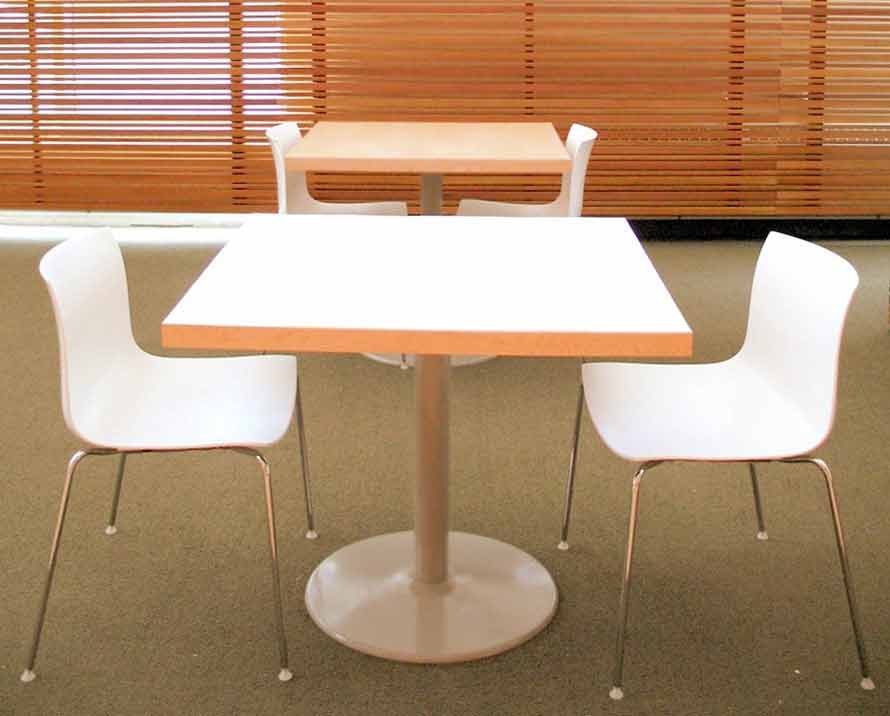This article is excerpted from a Shots NPR Health News article written by Michaeleen Doucleff on September 24, 2018.
About a hundred years ago, something devious started happening in our homes and offices, in our cars and at restaurants — and our backs have never been the same.
For hundreds — even thousands — of years, chairs were made of wood. Maybe the seat was covered with cord or cattail leaves, and if you were rich, you could afford some padded upholstery, which began to take off in the 17th and 18th centuries. But for most of Western history, people sat on chairs that were relatively firm, flat and proportioned for the human body.
Then in the 20th century, designers got their hands on new materials, such as steel, plastic and foam. And chairs started blowing up in size and softness. As a result, we’ve ended up with living rooms, offices and restaurants filled with chairs that are really bad for our backs. “It’s shocking how poorly designed they are for our bodies,” says Galen Cranz, who studies chair design at the University of California, Berkeley.
Almost every chair has one of two problems: They’re too deep or too soft. But these three tricks can basically get you comfortable — with a straight spine — in any chair.
1. Sit on the edge of a chair.
Forget about the back rest and use the wooden frame of chairs as a firm support. That makes it easier to keep your pelvis from tucking under your spine and your back ending in a C shape. And be careful how you position your legs. Most people think the knees and hips should be at the same level, Couch says, so that the angle between your torso and legs is 90 degrees. But you’ll be more comfortable — and less likely to slump — if that angle is bigger than 90 degrees, says Jean Couch, author and Founder and Director of the Balance Center. “Something like 120 degrees.”
2. Build a perch.
Take a firm pillow and place it a few inches from the chair’s front edge. Then sit down on the front of the pillow. So the pillow is tilting your pelvis forward a bit, and you’re kind of elevated above the chair. Couch says you can really use anything to build a perch — a wool blanket, a jacket, a rolled up yoga mat. These props help in two ways. First, they give you something firm to hold up your sitz bones (sitting bones). “When it’s too soft, my hip bones fall back and then I’m in that nasty C shape,” she says. And second, the pillow raises your hips up a bit so it’s easier for your knees to drop below and your legs to find that sweet spot of comfort — 120 degrees from your torso.
3. Build out the back.
The first two tricks work great for most chairs. But there’s one situation in which sitting on the edge or perching on a pillow isn’t a good idea: in the car. But there’s a big problem with the backrests in many cars and airplanes: They are shaped like C’s. If you use them properly, they force you to slump and bend your spine. “The only solution is build out the backrest so it’s more planar,” says Esther Gokhale, who also teaches posture and traditional movement, so you turn the C shape into an I shape. To do that grab one of your perching props. Take a firm pillow, a blanket or sweater and stick it right at your mid back. “Then elongate your spine by gently stretching your back over the pillow,” Gokhale says.
Original NPR Article: https://www.npr.org/sections/health-shots/2018/09/24/649169060/cant-get-comfortable-in-your-chair-heres-what-you-can-do
Get Help
If you’ve tried these techniques and still feel regular lower back or lower extremity pain, there may be a deeper issue. The Bonati Spine Institute has patented procedures to help those with chronic or acute pains return to their daily routine pain-free. Our patient advocates are available to discuss the situation with you directly and refer you to one of our highly-skilled surgeons to discuss your symptoms and determine if you are a candidate for our Bonati Spine Procedures. Getting started is easy. Simply call us at 855-267-0482 or complete our online contact form here.

